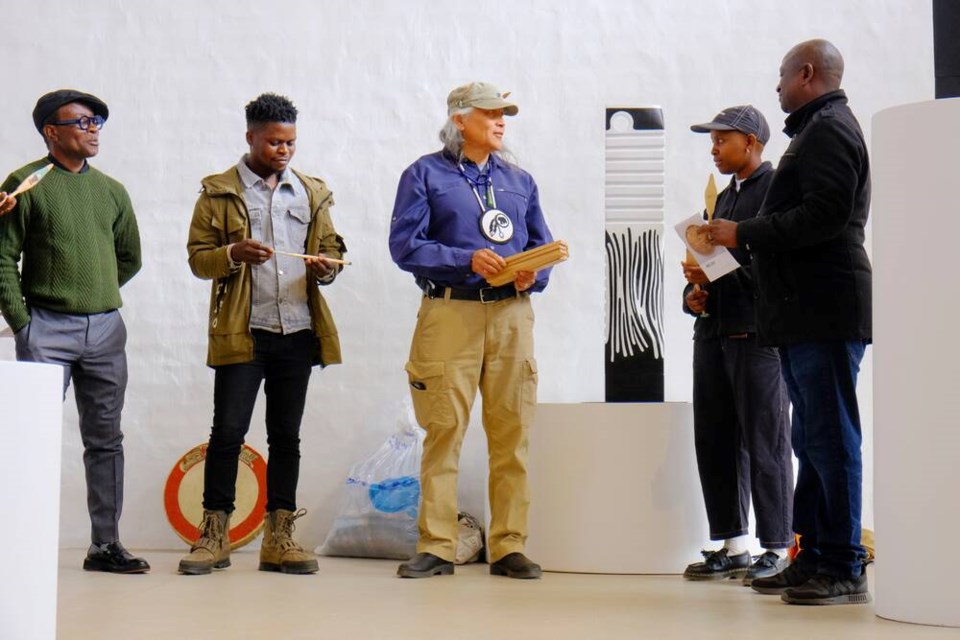The latest exhibition to come to North Vancouver’s Griffin Arts Project is encouraging visitors to consider the effects of decolonization, aptly in time for National Day of Truth and Reconciliation.
Running from Sept. 28 to Dec. 15, Future Worldings is an exhibition of six separate artists, three from South Africa and three from Canada, whose practices highlight decolonization efforts.
Part of an ongoing project that encompasses international exhibitions, three unique in-person residencies, a conference and public programming, the concept initially began three years ago when the gallery hosted the artists for a digital residency during the pandemic. The two-month residency was so successful that the artists vowed to unite in person once travel restrictions were eased.
Sḵwx̱wú7mesh Úxwumixw (Squamish Nation) and Kwakwaka’wakw artist Xwalacktun has been joined by Calgary artist Nura Ali and first generation Korean-Canadian artist Sun Forest in hosting the exhibition on home soil, while Wezile Harmans, Lebogang Mogul Mabusela, and Pebofatso Mokoena will be making their Canadian debut.
While each artist uses different mediums and produces unique artworks, the parallel histories of the movements in Canada and South Africa, which had its first Truth and Reconciliation Commission in 1996, put a string of cohesion throughout the pieces, said Mabusela, a multi-disciplinary artist based between Johannesburg and Pretoria.
“It’s so funny, because we make such different work, but there are so many tethers that are universal to our group, and so many things that we’re thinking about in terms of decolonization, in terms of language, in terms of storytelling, in terms of narrative, identity and politics," she said.
“There are so many things that are crossing over, even though they manifest in such different ways in everybody’s individual practices.”
Sculptor and master carver Xwalacktun led the first residency of the series in May and June this year, travelling to Johannesburg for a week to meet curators, artists and fellow master carvers and visit various arts organizations.
One of the most notable symmetries, said Xwalacktun, was how they all, especially in the context of decolonization, regarded the natural world.
“We’re still caught in our culture of storytelling and how we’re focused on the environment,” he said.
“And that’s something that is evident in our work.”
By provoking the conversation around decolonization, the exhibition encourages the audience to learn from the histories of both countries and grow from that knowledge, said the Griffin’s Lisa Baldissera, who co-curated the exhibition alongside Usha Seejarim and Karen Tam.
“Layer by layer, we all gain insight about what could possibly be a journey forward,” she said.
“Each country has a unique history and has its own process around the TRC, but we can still share insights about what it means to hope to move past and through a process of decolonization. It’s just an opportunity to deepen our knowledge so that we can be more effective in our own movement forward.”
The final residency is currently taking place at Griffin, where the artists are engaging in a one month creation period, connecting with the city’s history through onsite work and interacting with local curators, cultural workers and arts organizations like Emily Carr University and the Museum of Anthropology.
What will come from that residency, said the artists, is anyone’s guess, but no matter the pieces, Xwalacktun assured they will “start a conversation,” as art always does.
Mina Kerr-Lazenby is the North Shore News’ Indigenous and civic affairs reporter. This reporting beat is made possible by the .


